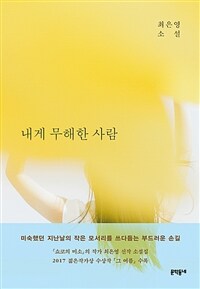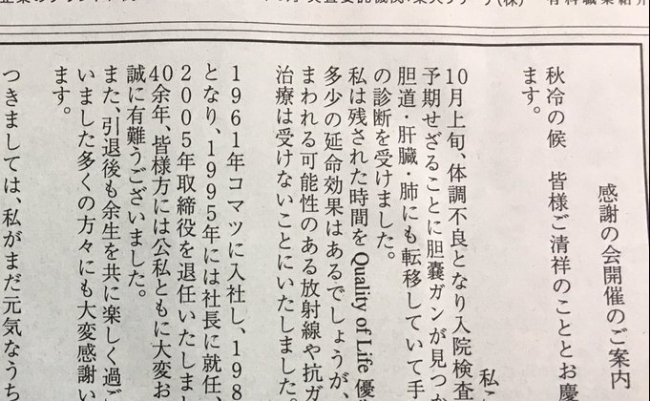Call of the Reed Warbler: A New Agriculture – A New Earth eBook: Charles Massy: Amazon.com.au: Kindle Store

Call of the Reed Warbler: A New Agriculture – A New Earth 1st Edition, Kindle Edition
by Charles Massy (Author)
4.3 out of 5 stars 6 customer reviews
#1 Best Sellerin Food Science
See all 3 formats and editions
Kindle
$11.47Read with Our Free App
Paperback
$32.224 New from $32.22
Length: 588 pages Enhanced Typesetting:Enabled Page Flip: Enabled
Language: English
Is it too late to regenerate the earth? Call of the Reed Warbler shows the way forward for the future of our food supply, our Australian landscape and our planet. This ground-breaking book will change the way we think of, farm and grow food. Author and radical farmer Charles Massy explores transformative and regenerative agriculture and the vital connection between our soil and our health. It is a story of how a grassroots revolution – a true underground insurgency – can save the planet, help turn climate change around, and build healthy people and healthy communities, pivoting significantly on our relationship with growing and consuming food. Using his personal experience as a touchstone – from an unknowing, chemical-using farmer with dead soils to a radical ecologist farmer carefully regenerating a 2000-hectare property to a state of natural health – Massy tells the real story behind industrial agriculture and the global profit-obsessed corporations driving it. He shows – through evocative stories – how innovative farmers are finding a new way and interweaves his own local landscape, its seasons and biological richness. At stake is not only a revolution in human health and our communities but the very survival of the planet. For farmer, backyard gardener, food buyer, health worker, policy maker and public leader alike, Call of the Reed Warbler offers a tangible path forward for the future of our food supply, our Australian landscape and our earth. It comprises a powerful and moving paean of hope.
Product details
Format: Kindle Edition
File Size: 1770 KB
Print Length: 588 pages
Page Numbers Source ISB
Product description
Review
Kirkus Reviews--
"An Australian sheepherder and range specialist looks at his home's biotic communities and how to improve their health with a more thoughtful kind of agriculture. Arachnophobes take note: There's a reason you want to see a lot of spiders in the tall grass, for, as Massy (Breaking the Sheep's Back, 2011, etc.) instructs, it means that good things are happening. 'To sustain millions of spiders, ' he writes, 'there must be a corresponding diversity in the food chain, and healthy landscape function above and below ground.' Such a healthy landscape, argues the author in considerable detail, cannot come about through what he calls the 'more-on' approach to agriculture, piling chemicals atop increasingly unproductive soil, but instead is the result of a 'regenerative' agriculture that necessarily happens at a small scale. The larger scale is what modern agronomists insist is needed in order to feed a growing world population, but at a cost that may be too great. As Massy observes, a livestock grower will always seek to save the herd before saving the range, no matter how shortsighted that strategy may be in the end. The author's prose can be arid and technical at times, as when he writes, 'at a global level, non-regeneratively grazed livestock emissions are a huge source of anthropogenic greenhouse gas emissions.' At others, he sounds like a modern butterflies-are-free avatar of Charles Reich: 'an Emergent mind combines elements of the previous Organic and Mechanical minds, but its true difference is an openness to the ongoing processes of emergence and self-organization.' The circularity aside, Massy's book is a useful small-is-beautiful argument for appropriate-level farming that people can do without massive machines or petrochemical inputs. Though less elegant than Wendell Berry and Wes Jackson, he certainly falls into their camp, and their readers will want to know Massy's work as well. A solid case for taking better care of the ground on which we stand."
"Part lyrical nature writing, part storytelling, part solid scientific evidence, part scholarly research, part memoir, [this] book is an elegant manifesto, an urgent call to stop trashing the Earth and start healing it."--The Guardian
"Charles Massy has written a definitive masterpiece that takes its place along with the writings of Aldo Leopold, Wendell Berry, Masanobu Fukuoka, Humberto Maturana, and Michael Pollan. No work has more brilliantly defined regenerative agriculture and the breadth of its restorative impact upon human health, biodiversity, climate, and ecological intelligence. There is profound insight here, realized by thirty-five years of farming on the ancient, fragile soils of the Australian continent, discernment expressed with exquisite clarity, seasoned wisdom, and some breathtaking prose of poetic elegance. I believe it takes its place as the single most important book on agriculture today, one that will become a classic text."--Paul Hawken, author of Blessed Unrest; editor of Drawdown
"I first met Charles Massy in 2015 when he visited the ranch of the Africa Centre for Holistic Management in Zimbabwe. Building on the work of many people, Massy has now written a compelling and comprehensive book on the importance of management being holistic--and how that will ultimately lead to a regenerative agriculture capable of restoring even the most degraded ecosystems and marginalized land in any climate and at any scale. He has done this with wonderful stories that take us on a journey of ecological literacy, supported by evocative insights into landscapes, science, and practical farming and living. Call of the Reed Warbler is a massive accomplishment and contribution to our collective work of building a new agriculture, a new Earth, and renewed human society and health."--Allan Savory, president of the Savory Institute
"This book will change the way you think about food, farming, and the place of humans on the planet. Introducing us to leaders of the regenerative agriculture movement, Massy offers real hope that we may yet fashion a society that gives more than it takes."--Liz Carlisle, author of Lentil Underground; lecturer, School of Earth, Energy, and Environmental Sciences, Stanford University
"Conceptually rich and filled with examples of diverse innovators, Call of the Reed Warbler is the most comprehensive and engaging book I've read on regenerative agriculture. Charlie Massy contends humans have morphed from an 'Organic mind' into a 'Mechanical mind, ' which is now evolving into an 'Emergent mind'--a change in consciousness that embraces self-organizing processes. He shows how the minds of the innovators in his book were opened to three key processes: First, they began to understand how landscapes function, how ecological system work, and how they are indivisibly connected. Second, they got out of the way to let nature repair, self-organize, and regenerate these functions. Third, they had the humility to 'listen to their land, ' change, and continue to learn with that same openness. Massy concludes we can heal Earth, but only by transforming ourselves and our connections with the landscapes and communities in which we live. This book is a thoughtful step in that direction."--Fred Provenza, professor emeritus, Department of Wildland Resources, Utah State University; author of Nourishment
"Charles Massy is a leader in the regenerative agriculture movement in Australia with a message of hope for everyone. Using his arid homeland as a touchstone, Massy thoughtfully counterbalances the damage done by industrial agriculture to our land and our prospects with evocative examples from around the world of a hopeful way forward. His beliefs are grounded in practical experience, his vision clear, and his words inspiring. Call of the Reed Warbler is a must-read!"--Courtney White, author of Grass, Soil, Hope
"Call of the Reed Warbler not only heralds the sound of an ecosystem functioning but also of a world awakening to regenerative agriculture. Charlie Massy is Australia's equivalent to Thoreau and Leopold and a practical regenerative farmer to boot. I can't think of anyone better equipped to pen a book like this, and to do so with such scholarship, integrity, and rollicking prose is a credit to Charlie and those whose journey he's portrayed. Easily my 'Book of the Year.'"--Darren J. Doherty, founder, Regrarians Limited
Booklist--
"In the last few decades, a growing movement toward pesticide and GMO-free farming practices has been blossoming throughout the world as a counterbalance to corporate-driven agribusinesses. Piggybacking on terms like sustainability and permaculture, veteran sheepherder and author Massy refers to these environmentally friendly methods as "regenerative agriculture," and he offers inspiring testimony here on how he and many of his fellow food-growing Australians have transformed their farmlands by respecting the native ecosystems that surround them. In three richly informative sections, Massy recounts the background story of how aboriginal sustainable land use eventually gave way to what he calls mechanical agriculture practices; demonstrates how balancing five landscape functions, such as solar energy and water cycles, can revitalize the soil; and gives abundant examples of Aussie farmers, including himself, using these practices with great success....[Massy's] message about the dire need for sustainability is one that all readers concerned about food and the environment should closely heed."
Book Description
Is it too late to regenerate the earth? Call of the Reed Warbler shows the way forward for the future of our food supply, our Australian landscape and our planet.
See all Product description
Showing 1-6 of 6 reviews
Top Reviews
Jim Higgins
5.0 out of 5 starsA vision of what can be10 September 2018
Format: Kindle EditionVerified Purchase
Charles Massy has written a story that captures the essence of what is required to face our future with confidence and hope. This is not just a message for farming and how we can regenerate the health of land, it is a message for all on how we can build a healthy future by collaboration with each other and cooperation with the life sustaining energies of Mother Earth. Thank you, Charles, I hope more will come to share your vision.
HelpfulComment Report abuse
Mr. William H. Gore
3.0 out of 5 starsThe ideas are great, but the lack of doubt concerns me6 June 2018
Format: Kindle EditionVerified Purchase
Needed editing. it was too long for me. The ideas are great, but the lack of doubt concerns me. i am no expert.
HelpfulComment Report abuse
Amazon Customer
5.0 out of 5 starsGreat book by someone with a wealth of knowledge and understanding experience28 July 2018
Format: Kindle EditionVerified Purchase
Loved this book and all the insights into how regenerative agriculture is playing out across Australia. Very inspiring read.
HelpfulComment Report abuse
DS
5.0 out of 5 starsImportant book6 December 2018
Format: PaperbackVerified Purchase
Excellent analysis of the subject
HelpfulComment Report abuse
Retrac
3.0 out of 5 starsPassionate but narrow view of Agriculture's Future14 May 2018
Format: Kindle Edition
Charles Massy’s book looks impressive and includes some great stories- parables about how things should be done. It is a compilation of case studies that promotes pesticide and fertiliser free; low input - low output agriculture. Lacking in data but full of emotional responses to the larger agricultural industries in Australia.
It is a good overview of current alternative agricultural thinking- promoting a suite of non- mainstream ideology based approaches to agriculture.
The thesis is well developed but dismisses mainstream agriculture without much data. Are the other 95% of our farmers that bad? Massey portrayed farmers who replace nutrients exported in commodities with fertiliser and those who use phosphorus fertiliser to boost legumes as bad. He highlights examples of people who have adopted low input approaches- but there is no economic data.
Buy the book to see alternative views, but don’t buy it as a guide to how to farm or develop farm policy.
3 people found this helpful
HelpfulComment Report abuse
Martin Kerr
5.0 out of 5 starsHe can survive and prosper as he and many other farmers like him have shown8 March 2018
Format: Kindle Edition
March 8, 2018
Martin Kerr
A call to arms
Call of the Reed Warbler: A New Agriculture on Earth
By Charles Massy
University of Queensland Press 2017, 569pp
Charles Massy has learned the hard way; off a hard farm, working sheep, pastures, laying fences, studying agriculture, earning a living and raising a family. His early interests were birds, birds he rarely saw and birds who re-established themselves such as the reed warbler first described on a farm in the upper Hunter Valley. Peter Andrews a friend of entrepreneur Gerry Harvey had filled his creek with logs and sometimes car tyres, to slow the flow of water. Water spread its benefits into the surrounding farmland, brought back birds and insects and regenerated his horse breeding property. I watched a TV documentary about Andrews’ efforts and was impressed. So were a few academics and scientists. Likewise, Charles Massy called on many specialists for assistance but remained grounded in the idea of the self-rectifying and balancing forces of nature.
Spun out of his PhD at ANU, Call of the Reed Warbler is a more than a Henry David Thoreau (Walden, 1854), a Tim Flannery (The Future Eaters,1994), a Jared Diamond (Guns, Germs and Steel, 1997, Collapse, 2005) or more recently, a Bill Gammage (The Biggest Estate on Earth, 2011). Charles Massy combines trial and error, insight, research, deep thinking, creativity, connectedness to nature; investigating farm management in all its forms. His thinking is based essentially on managing pasture and its surrounds through the use of grazing animals. Regeneration of degraded (often salt affected) land is proved possible time and time again, in Africa, Europe, North America, New Zealand and Australia.
What is more, regenerative agriculture captures more carbon and requires less manufactured inputs – insecticides and herbicides. Output may be less, but quality and taste in meat, grains, pulses and root crops potentially improves the health of its consumers.
This book must be a standard text for anyone interested in agriculture, regeneration of landscape, forestry and seeking to eat herbicide and insecticide free food.
If Massy is a greenie then he is truly entitled to this term. He’s putting something back into the world as we know it. He can survive and prosper as he and many other farmers like him have shown. He shows that industrial agriculture in some cases has adapted to similar researches and investigations. New (once traditional) grazing techniques require the constant moving of stock to fresh pasture to avoid clear foraging. Grass growth is thereby encouraged with the help of cloven feet and manure. In the case of Australia native grasses re-appear recognising Aboriginal fire stick regeneration. Settler pastoralists lived off the sheep’s back but only for a time; depriving soils of moisture and their biological and mineral balance.
Dr Massy is hard on companies such as Monsanto. He’s sent farm advisers peddling new seeds, manufactured fertilisers, insecticides and insidious glyphosate on their way. He pauses from time to time to assay his land, consider his family and his responsibilities. Here is a working farmer who to survive has to make decisions, more often not making them. Nature over many years plays its role given the co-generative benefits of variety – water, sun, animals and its vast biome in the guts and soil.
Science and the ‘Mechanical Mind’ led to high yields at the expense of the health qualities of product and the land long term. Massy demonstrates through five functions the re-generation of landscapes. But transforming the earth means transforming ourselves. A new holistic psychology is required. A sick mind leads to bad decisions. Unrewarding farm land leads to depression and worse. Charles Massy experienced the worst at a very young age. His book with its beautiful descriptions and balanced awareness, backed up by extensive reading lists and endnotes is a more than a text book. It’s a grand feat of creativity infused with practical and principled observations.
Martin Kerr’s New Guinea Patrol was first published in 1973. His cult memoir, short stories and seven novels are available on Kindle.
Read less
HelpfulComment Rep













 -
-











 수상 : 2018년 한국일보문학상, 2017년 김준성문학상(21세기문학상, 이수문학상), 2017년 구상문학상 젊은작가상
수상 : 2018년 한국일보문학상, 2017년 김준성문학상(21세기문학상, 이수문학상), 2017년 구상문학상 젊은작가상


